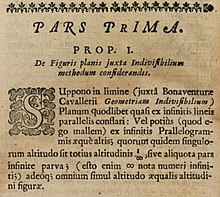Infinity symbol
Infinity symbol | |
|---|---|
| In Unicode | U+221E ∞ INFINITY (∞) |
| Different from | |
| Different from | U+267E ♾ PERMANENT PAPER SIGN U+26AD ⚭ MARRIAGE SYMBOL U+221D ∝ PROPORTIONAL TO |
The infinity symbol (∞) is a
This symbol was first used mathematically by
Both the infinity symbol itself and several variations of the symbol are available in various character encodings.
History

The lemniscate has been a common decorative motif since ancient times; for instance it is commonly seen on Viking Age combs.[4]
The English mathematician
Perhaps in some cases because of typographic limitations, other symbols resembling the infinity sign have been used for the same meaning.[7] One paper by Leonhard Euler was typeset with an open letterform more closely resembling a reflected and sideways S than a lemniscate (something like S),[10] and even "O–O" has been used as a stand-in for the infinity symbol itself.[7]
Usage
Mathematics
In mathematics, the infinity symbol is typically used to represent a
such asthe infinity sign is conventionally interpreted as meaning that the variable grows arbitrarily large towards infinity, rather than actually taking an infinite value, although other interpretations are possible.[12]
When quantifying actual infinity, infinite entities taken as objects per se, other notations are typically used. For example, (
The infinity symbol may also be used to represent a point at infinity, especially when there is only one such point under consideration. This usage includes, in particular, the infinite point of a projective line,[13] and the point added to a topological space to form its one-point compactification.[14]
Other technical uses

In areas other than mathematics, the infinity symbol may take on other related meanings. For instance, it has been used in bookbinding to indicate that a book is printed on acid-free paper and will therefore be long-lasting.[15] On cameras and their lenses, the infinity symbol indicates that the lens's focal length is set to an infinite distance, and is "probably one of the oldest symbols to be used on cameras".[16]
Symbolism and literary uses
In modern mysticism, the infinity symbol has become identified with a variation of the ouroboros, an ancient image of a snake eating its own tail that has also come to symbolize the infinite, and the ouroboros is sometimes drawn in figure-eight form to reflect this identification—rather than in its more traditional circular form.[18]
In the works of Vladimir Nabokov, including The Gift and Pale Fire, the figure-eight shape is used symbolically to refer to the Möbius strip and the infinite, as is the case in these books' descriptions of the shapes of bicycle tire tracks and of the outlines of half-remembered people. Nabokov's poem after which he entitled Pale Fire explicitly refers to "the miracle of the lemniscate".[19] Other authors whose works use this shape with its symbolic meaning of the infinite include James Joyce, in Ulysses,[20] and David Foster Wallace, in Infinite Jest.[21]
Graphic design
The well-known shape and meaning of the infinity symbol have made it a common typographic element of graphic design. For instance, the Métis flag, used by the Canadian Métis people since the early 19th century, is based around this symbol.[22] Different theories have been put forward for the meaning of the symbol on this flag, including the hope for an infinite future for Métis culture and its mix of European and First Nations traditions,[23][24] but also evoking the geometric shapes of Métic dances,[25], Celtic knots,[26] or Plains First Nations Sign Language.[27]
A rainbow-coloured infinity symbol is also used by the autism rights movement, as a way to symbolize the infinite variation of the people in the movement and of human cognition.[28] The Bakelite company took up this symbol in its corporate logo to refer to the wide range of varied applications of the synthetic material they produced.[29] Versions of this symbol have been used in other trademarks, corporate logos, and emblems including those of Fujitsu,[30] Cell Press,[31] and the 2022 FIFA World Cup.[32]
Encoding
The symbol is encoded in Unicode at U+221E ∞ INFINITY[33] and in LaTeX as \infty: .[34] An encircled version is encoded for use as a symbol for acid-free paper.
| Preview | ∞ | ♾ | ||
|---|---|---|---|---|
| Unicode name | INFINITY | PERMANENT PAPER SIGN | ||
| Encodings | decimal | hex | dec | hex |
| Unicode | 8734 | U+221E | 9854 | U+267E |
| UTF-8 | 226 136 158 | E2 88 9E | 226 153 190 | E2 99 BE |
| GB 18030 | 161 222 | A1 DE | 129 55 174 56 | 81 37 AE 38 |
| Numeric character reference | ∞ |
∞ |
♾ |
♾ |
| Named character reference | ∞ | |||
| OEM-437 (Alt Code)[35] | 236 | EC | ||
| Mac OS Roman[36] | 176 | B0 | ||
| Symbol Font encoding[37] | 165 | A5 | ||
| Shift JIS[38] | 129 135 | 81 87 | ||
EUC-JP[39] |
161 231 | A1 E7 | ||
| 161 196 | A1 C4 | |||
| EUC-KPS-9566[42] | 162 172 | A2 AC | ||
| Big5[43] | 161 219 | A1 DB | ||
| LaTeX[34] | \infty | \acidfree | ||
| CLDR text-to-speech name[44] | infinity sign | infinity | ||
The Unicode set of symbols also includes several variant forms of the infinity symbol that are less frequently available in fonts in the block Miscellaneous Mathematical Symbols-B.[45]
| Preview | ⧜ | ⧝ | ⧞ | |||
|---|---|---|---|---|---|---|
| Unicode name | INCOMPLETE INFINITY | TIE OVER INFINITY | INFINITY NEGATED WITH VERTICAL BAR | |||
| Encodings | decimal | hex | dec | hex | dec | hex |
| Unicode | 10716 | U+29DC | 10717 | U+29DD | 10718 | U+29DE |
| UTF-8 | 226 167 156 | E2 A7 9C | 226 167 157 | E2 A7 9D | 226 167 158 | E2 A7 9E |
| Numeric character reference | ⧜ |
⧜ |
⧝ |
⧝ |
⧞ |
⧞ |
| Named character reference | ⧜ | ⧝ | ⧞ | |||
| LaTeX[34] | \iinfin | \tieinfty | \nvinfty | |||
See also
References
- MR 0658492.
- ISBN 978-0-88385-576-8.
- ISBN 978-0-671-74281-2.
- ^ van Riel, Sjoerd (2017). "Viking Age Combs: Local Products or Objects of Trade?". Lund Archaeological Review. 23: 163–178. See p. 172: "Within this type the lemniscate (∞) is a commonly used motif."
- ^ Wallis, John (1655). "Pars Prima". De Sectionibus Conicis, Nova Methodo Expositis, Tractatus (in Latin). pp. 4.
- ISBN 0-8284-0314-7.
- ^ a b c Cajori, Florian (1929). "Signs for infinity and transfinite numbers". A History of Mathematical Notations, Volume II: Notations Mainly in Higher Mathematics. Open Court. pp. 44–48.
- MR 1129467.
- ^ ISBN 978-1-84119-650-3.
- ^ Cajori (1929) displays this symbol incorrectly, as a turned S without reflection. It can be seen as Euler used it on page 174 of Euler, Leonhard (1744). "Variae observationes circa series infinitas" (PDF). Commentarii Academiae Scientiarum Petropolitanae (in Latin). 9: 160–188.
- ISBN 978-0-393-06177-2.
- S2CID 120023303.
- ISBN 978-1-84800-056-8.
- ISBN 978-3-540-29587-7.
- ISBN 978-0-8444-1015-9.
- .
- ^ Armson, Morandir (June 2011). "The transitory tarot: an examination of tarot cards, the 21st century New Age and theosophical thought". Literature & Aesthetics. 21 (1): 196–212. See in particular p. 203: "Reincarnation is symbolised in a number of cards within the Waite-Smith tarot deck. The primary symbols of reincarnation used are the infinity symbol or lemniscate, the wheel and the circle."
- ISBN 978-0-226-61855-5. The book also features this image on its cover.
- ISBN 978-0-8014-2211-9.
- .
- .
- ISBN 978-0-8061-3556-4.
- S2CID 165232342.
- ^ "The Métis flag". Gabriel Dumont Institute(Métis Culture & Heritage Resource Centre). Archived from the original on 2013-07-24.
- ISBN 0-920915-18-3.
- ^ Darren R., Préfontaine (2007). "Flying the Flag, Editor's note". New Breed Magazine (Winter 2007): 6. Retrieved 2020-08-26.
- ^ Barkwell, Lawrence J. "The Metis Infinity Flag". Virtual Museum of Métis History and Culture. Gabriel Dumont Institute. Retrieved 2020-07-15.
- PMID 27690292.
- PMID 18318037.
- ISBN 978-0-19-988340-0.
- S2CID 229179025.
- ^ "Qatar 2022: Football World Cup logo unveiled". Al Jazeera. September 3, 2019.
- ^ "Unicode Character "∞" (U+221E)". Unicode. Compart AG. Retrieved 2019-11-15.
- ^ a b c Pakin, Scott (May 5, 2021). "Table 294: stix Infinities". The Comprehensive LATEX Symbol List. CTAN. p. 118. Retrieved 2022-02-19.
- ^ Steele, Shawn (April 24, 1996). "cp437_DOSLatinUS to Unicode table". Unicode Consortium. Retrieved 2022-02-19.
- ^ "Map (external version) from Mac OS Roman character set to Unicode 2.1 and later". Apple Inc. April 5, 2005. Retrieved 2022-02-19 – via Unicode Consortium.
- ^ "Map (external version) from Mac OS Symbol character set to Unicode 4.0 and later". Apple Inc. April 5, 2005. Retrieved 2022-02-19 – via Unicode Consortium.
- ^ "Shift-JIS to Unicode". Unicode Consortium. December 2, 2015. Retrieved 2022-02-19.
- ^ "EUC-JP-2007". International Components for Unicode. Unicode Consortium. Retrieved 2022-02-19 – via GitHub.
- ^ "IBM-970". International Components for Unicode. Unicode Consortium. May 9, 2007. Retrieved 2022-02-19 – via GitHub.
- ^ Steele, Shawn (January 7, 2000). "cp949 to Unicode table". Unicode Consortium. Retrieved 2022-02-19.
- ^ "KPS 9566-2003 to Unicode". Unicode Consortium. April 27, 2011. Retrieved 2022-02-19.
- ^ van Kesteren, Anne. "big5". Encoding Standard. WHATWG.
- ^ Unicode, Inc. "Annotations". Common Locale Data Repository – via GitHub.
- ^ "Miscellaneous Mathematical Symbols-B" (PDF). Unicode Consortium. Archived (PDF) from the original on 2018-11-12. Retrieved 2022-02-19.






